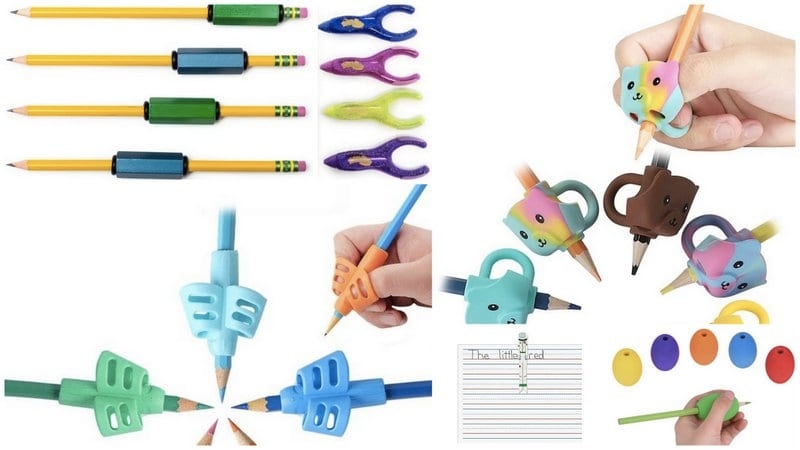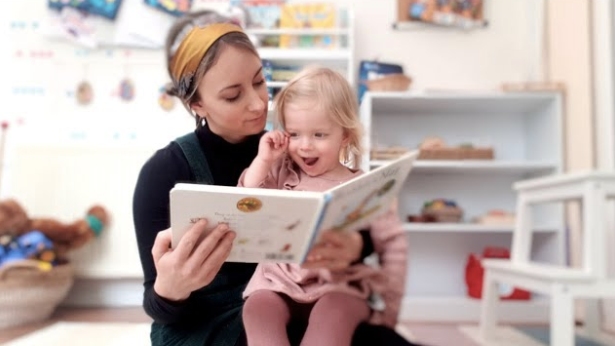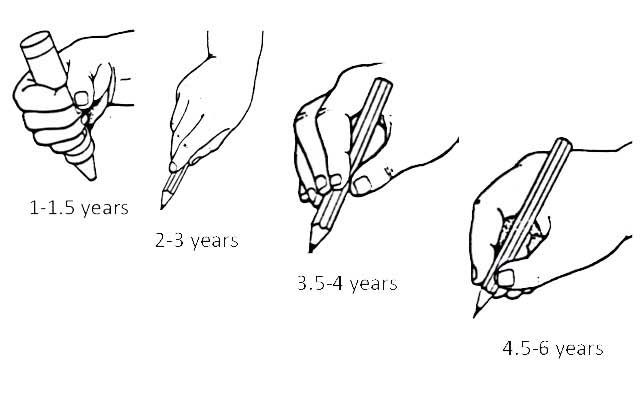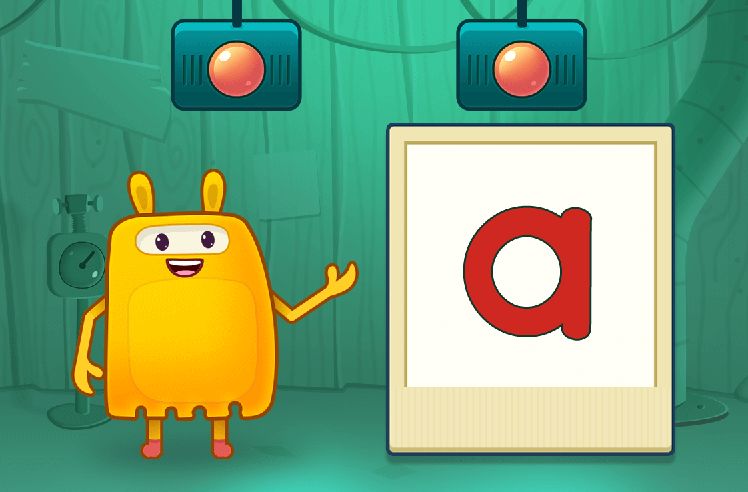Ever felt a mix of joy and worry watching a kid clutch a crayon for the first time? If you’re nodding, you’re not alone. Figuring out how to teach kids to write is a common puzzle for many of us. It’s that first big step from messy lines to meaningful words.
Math & ELA | PreK To Grade 5
Kids see fun.
You see real learning outcomes.
Watch your kids fall in love with math & reading through our scientifically designed curriculum.
Parents, try for free Teachers, use for free
Surprisingly, teaching kids to write doesn’t have to be a head-scratcher. With some simple steps and fun activities, it can easy and fun for you and your little one.
In the following sections, we’ll dive into a detailed step-by-step guide on how to teach kids to write. Each step is crafted to build upon the last, ensuring a solid foundation is laid for your child’s writing skills. By the end of these strategies, your kids will be equipped with the tools to express their thoughts and ideas clearly and creatively.
9 Easy Steps to Teach Kids to Write
Step 1: Develop Fine Motor Skills
Fine motor skills are the foundation of learning to write. They involve using small muscles in the hands and fingers to perform tasks like holding a pencil, turning pages, and eventually writing letters and words. Developing these skills is crucial for teaching kids to write because it directly impacts their ability to control writing instruments and make the precise movements required.
When to Start:
The journey to develop writing skills begins long before a child ever picks up a pencil to write. It starts as early as toddlerhood. Children can begin engaging in activities to enhance their fine motor skills from as young as 18 months old. Starting early is important to ensure they have a strong foundation to build upon as they grow.
How to Do It:
- Engage your child in activities that encourage using their hands and fingers. Play with clay, finger painting, and threading beads are excellent ways to strengthen these muscles. Using safety scissors for cutting simple shapes out of paper is another beneficial activity.
- Incorporate fine motor skills development into daily tasks. Encourage your child to help with buttoning clothes, zipping up bags, or using child-safe utensils during meal times.
- Provide toys and tools that promote fine motor development. Puzzles, building blocks, and age-appropriate art supplies. Another way is to introduce them to online fine motor skill games. These are fun and interactive and can keep kids engaged while helping them practice precise movements and coordination.
Here are some fun options where your child can pop balloons, toss fruits into baskets, or drag and drop objects. These activities improve precision, enhance hand-eye coordination, and mimic real-life actions, making the learning process practical and engaging.
Games to Enhance Precision and Hand-Eye Coordination
Pop balloons, toss fruits, and drag objects to improve motor control
Key Milestones:
- Initially, focus on your child’s ability to grasp and hold objects. This is the first step towards holding a pencil correctly.
- Children should be able to manipulate objects more precisely as their skills advance, such as turning pages or unscrewing lids.
Related Reading: Best Fine Motor Activities For Preschoolers
Step 2: Introduce Prewriting Skills
Prewriting skills are the early writing skills children need before they can form letters and words. These skills include drawing lines, shapes and eventually combining these to make letters. Introducing prewriting skills is critical in teaching kids how to write because it helps children understand the basic strokes involved in letter formation.
When to Start:
Children are ready to start developing prewriting skills around the age of 3. This is when they typically have enough control over their hand and finger movements to begin drawing basic shapes and lines.
How to Do It:
- Begin with simple shapes like circles, straight lines, and curves. These shapes are the building blocks of letters.
- Use tracing worksheets to trace lines and shapes. This helps them understand the motion of writing and builds their confidence. Here are some printable shapes worksheets with dotted lines and guided patterns that are great for teaching them to stay within the lines while improving control and coordination. These are best for teach kids to write in english:
Master Prewriting Skills with Tracing Activities
Boost prewriting skills with dotted patterns and guided tracing sheets
Key Milestones:
- Being able to draw circles, lines, and crosses is a sign they’re developing the necessary control for writing.
- Successfully tracing over dotted lines or shapes shows they’re ready to start forming more complex figures, like letters.
Step 3: Teach Letter Recognition
Letter recognition is the ability to recognize and name all the letters of the alphabet. It’s a fundamental aspect of learning how to teach kids to write because recognizing letters is the first step towards understanding that letters represent sounds, which combine to form words.
When to Start:
Letter recognition can begin as early as age 2 or 3, alongside or shortly after introducing prewriting skills. At this stage, children are usually curious about letters and eager to learn more about them.
How to Do It:
- Using alphabet books is a great way to familiarize children with letters. Read together and point out each letter, discussing its shape and sound. Here are read-alouds that focus on letter recognition and early literacy. These are ideal for interactive sessions where kids can listen, repeat, and engage with stories.
- Engage children with games that involve finding and naming letters. This could be as simple as a letter hunt around the house or online letter hunt games.
Here are some letter hunt games that use fun characters and engaging visuals to make learning exciting. These games encourage kids to pop letters, find hidden ones, and match them in creative ways. The interactive elements and vibrant designs keep children motivated while reinforcing their ability to recognize and name letters.
Fun Games to Master Letter Recognition
Discover hidden letters and match them to sharpen recognition
Key Milestones:
- Naming each letter, both uppercase and lowercase, is a key milestone in letter recognition.
- Recognizing letters not just in books or games but also in the world around them, like on signs or in their favorite storybooks.
Related Reading: How to Teach Alphabet to Kids
Step 4: Practice Writing Letters
Practicing writing letters is a crucial step in teaching a preschooler to write. It’s where the physical act of writing starts to take shape, moving from recognizing and drawing shapes to forming actual letters. This stage is essential for children to learn how to express themselves through writing.
When to Start:
Once children are comfortable with prewriting shapes and have a good grasp of letter recognition, usually around ages 3 to 4, they’re ready to start practicing writing letters.
How to Do It:
- Motivating children by teaching them to write their names first is a powerful tool. It makes the learning process personal and engaging, giving them a sense of pride in their writing.
- Providing worksheets for tracing and writing letters helps children understand the form and structure of each letter. Start with uppercase letters, which are generally easier to write, and then move to lowercase letters. Here are some fun worksheets to get started:
Learn Letter Formation
Trace and write uppercase and lowercase letters step by step
Key Milestones:
- Being able to write their own name is a significant milestone for preschoolers.
- Moving from tracing to independently writing letters shows progress in their writing skills.
Related Reading: How to Write Alphabets in Cursive
Step 5: Connect Letters to Sounds
By introducing letter sounds, children begin to understand that letters are not just shapes but symbols that represent sounds. This understanding is crucial for developing reading skills and is a fun way to teach writing as it makes the process more interactive and meaningful.
When to Start:
This step can begin concurrently with practicing writing letters, typically around ages 4 to 5, as children’s understanding of the alphabet solidifies.
How to Do It:
- Introducing letter sounds with phonics games and flashcards makes learning dynamic and engaging. Phonics activities help children make the connection between letters and sounds, a critical step in learning to read and write.
- Here are some phonics games that make learning fun and engaging. Kids hear a sound (like /a/ or /b/) and match it to the correct letter from several options. Each sound is carefully pronounced, helping kids recognize and learn it accurately. These games encourage active listening and reinforce the connection between sounds and letters.
Connect Letters to Sounds
Reinforce phonics skills with games for letter-sound matching
- Start forming simple words to emphasize the connection between writing and reading. This can be as straightforward as writing C-A-T and sounding it out together. It reinforces the idea that combining letters creates words with meaning.
Key Milestones:
- Being able to associate specific sounds with their corresponding letters.
- The ability to write and sound out simple words marks a significant advancement in their writing and reading journey.
Step 6: Encourage Writing Words
Encouraging writing words is a pivotal step in how to teach kids to write. It transitions them from understanding individual letters and sounds to recognizing and forming whole words. This stage boosts their confidence and demonstrates the practical use of writing in communication.
When to Start:
After children are comfortable with letters and simple phonics, usually around the age of 5 or when they show interest in creating words, it’s time to introduce this step.
How to Do It:
- Teaching common sight words for recognition and writing is essential. Sight words are frequently used words children are encouraged to recognize on sight. Start with a small, manageable list and gradually expand as they become more confident. Here is a printable list of 95 common sight words that you can use to help your child recognize and write words.
| a | and | away | big | blue |
| can | come | down | find | for |
| funny | go | help | here | I |
| in | is | it | jump | little |
| look | make | me | my | not |
| one | play | red | run | said |
| see | the | three | to | two |
| up | we | where | yellow | you |
| all | am | are | at | be |
| black | brown | but | came | did |
| do | eat | four | get | good |
| have | he | into | like | must |
| new | no | now | on | our |
| out | please | pretty | ran | ride |
| saw | say | she | so | soon |
| that | there | they | this | too |
| under | want | was | well | went |
| what | white | who | will | with |
| yes | after | again | an | any |
- Encouraging the formation of simple sentences helps children see how words come together to express ideas. Begin with sentences that are relevant to them, like “I like my cat” or “The sun is hot.”
Key Milestones:
- Being able to write and recognize common sight words.
- The ability to string words together to form basic sentences.
Step 7: Introduce Writing Instruments

Introducing a variety of writing instruments is crucial for children to explore and find what they are most comfortable using. It’s also an opportunity to teach the proper grip, which is essential for writing efficiently and avoiding hand fatigue. This step is about refining their physical skills for writing and offering writing tips for kids to enhance their writing experience.
When to Start:
This can be introduced as soon as children start showing interest in drawing or writing, and should be continuously adapted as they grow and their skills develop.
How to Do It:
- Allow children to experiment with different writing tools such as pencils, crayons, markers, and chalk. Each tool offers a different grip, resistance, and experience on paper, helping them develop a versatile skill set.
- Teaching the correct way to hold a pencil is fundamental. Show them the “tripod grip,” which is holding the pencil with the thumb, index, and middle finger. This grip controls the pencil, making writing easier and more comfortable.
Key Milestones:
- Experimenting with Different Tools: Children should feel comfortable trying out various writing instruments and expressing a preference.
- Mastering the Tripod Grip: Successfully using the tripod grip when writing or drawing is a sign of developing fine motor control and readiness for more advanced writing tasks.
Step 8: Expand Writing Contexts
Expanding writing contexts is about broadening a child’s understanding and application of writing across different genres. This step is crucial to improve writing skills as it exposes children to a variety of writing forms, structures, and purposes. It encourages them to think creatively and apply their writing skills in diverse ways.
When to Start:
This can be introduced once children are comfortable writing sentences and simple paragraphs, typically around ages 6 to 8.
How to Do It:
- Introduce various writing forms such as stories, letters, poems, and reports. Discuss the structure and purpose of each genre. This variety keeps writing exciting and shows its practical uses in real life.
- Use prompts to inspire creativity and interest in different topics. Prompts can be questions, pictures, or scenarios that spark ideas for writing. This is one of the effective ways to improve writing skills for students by making them think and write creatively. Here are some fun-themed creative writing worksheets to get started:
Expand Writing Skills with Stories, Poems, and More!
Enhance writing skills with engaging and creative prompts
Key Milestones:
- Successfully writing a simple story, letter, or poem.
- Being able to create a coherent piece of writing in response to a given prompt.
Step 9: Encourage Reading

A strong reading habit is foundational to writing well. Reading regularly exposes children to a wide range of vocabulary, sentence structures, and styles, enhancing their language skills and understanding. This, in turn, significantly improves writing skills as children learn to emulate the structures and styles they encounter in their reading.
When to Start:
Encouraging a love for reading should start as early as possible, even before a child begins to write, and continue throughout their education.
How to Do It:
- Foster a love for reading by sharing books together, visiting libraries, and discussing stories. Encourage children to explore books on topics that interest them, which will keep them engaged and motivated to read more.
- Talk about the books they are reading. Discussing characters, plots, and what they enjoyed helps deepen their understanding and appreciation of writing.
Related Reading: How to Set Meaningful Reading Goals for Students
Key Milestones:
- Establishing a routine where reading is a daily activity.
- Being able to talk about what they read, including story elements and what they liked or didn’t like.
Related Reading: Best Reading Activities for Kids
How SplashLearn Can Encourage Children to Write
SplashLearn is a fun and interactive platform designed to make learning an exciting adventure for children. When it comes to writing, SplashLearn offers a variety of resources and activities that can significantly encourage and improve children’s writing skills. Here’s how SplashLearn can be a valuable tool in your child’s writing journey:
- Interactive Writing Games: SplashLearn includes a range of writing games that are not only engaging but also educational. These games are designed to teach children the basics of writing, from letter recognition to word formation, in a fun and interactive way.
- Personalized Learning Paths: One of the key features of SplashLearn is its ability to adapt to each child’s learning pace and style. This personalized approach ensures that children are not overwhelmed or bored but are constantly challenged in a way that’s just right for them. This tailored learning experience can help children progress in their writing skills more effectively.
- Rewards and Motivation: SplashLearn uses a system of rewards and achievements to motivate children. As they complete writing tasks and games, they earn points or badges, which can motivate young learners. This positive reinforcement encourages children to keep practicing their writing, helping them improve over time.
- Parental Involvement: SplashLearn also provides tools and reports for parents to track their child’s progress. This feature allows parents to see how their child is advancing in their writing skills and identify areas where they might need extra help. It also offers suggestions for activities outside the app that encourage writing practice.
- Educational Resources: Beyond games, SplashLearn offers a wealth of worksheets to support writing learning at home. These resources can be used alongside interactive games to provide children with a comprehensive writing learning experience.
4 Benefits of Teaching Kids How to Write Effectively
- Writing is a fundamental form of communication. Teaching kids how to write effectively helps them express their thoughts, ideas, and emotions clearly and confidently in academic settings and their personal lives.
- Good writing skills are crucial for success in school. From completing homework assignments to writing essays and taking notes, the ability to write well can significantly impact a child’s academic achievement and future educational opportunities.
- Writing offers children a unique outlet to explore their creativity and imagination. By learning to write stories, poems, or even journal entries, kids can develop their creative talents and discover new ways of seeing the world.
- The process of writing involves complex thinking skills such as planning, organizing, and problem-solving. Teaching kids to write effectively helps enhance these cognitive abilities, contributing to overall intellectual growth.
Conclusion
Learning how to teach kids to write is a journey filled with opportunities to enhance their communication, creativity, and cognitive development. By embracing this journey, we can help our children build a strong foundation in writing, setting them up for success in school and beyond.
Related Reading: How to Improve Handwriting: 10 Effective Tips for Parents
Frequently Asked Questions (FAQs)
What is the best age to teach a child to write?
The best age to start teaching a child to write is around 3 to 4 years old, beginning with basic prewriting skills and gradually moving to more structured writing tasks.
How should a 4 year old be writing?
A 4-year-old should be practicing prewriting skills such as drawing lines, shapes, and beginning to recognize and attempt writing letters, especially those in their name.
Should a 3 year old be able to write their name?
While some 3-year-olds may start showing interest in writing their names, it’s more common for them to recognize and trace letters rather than write their names independently.















































